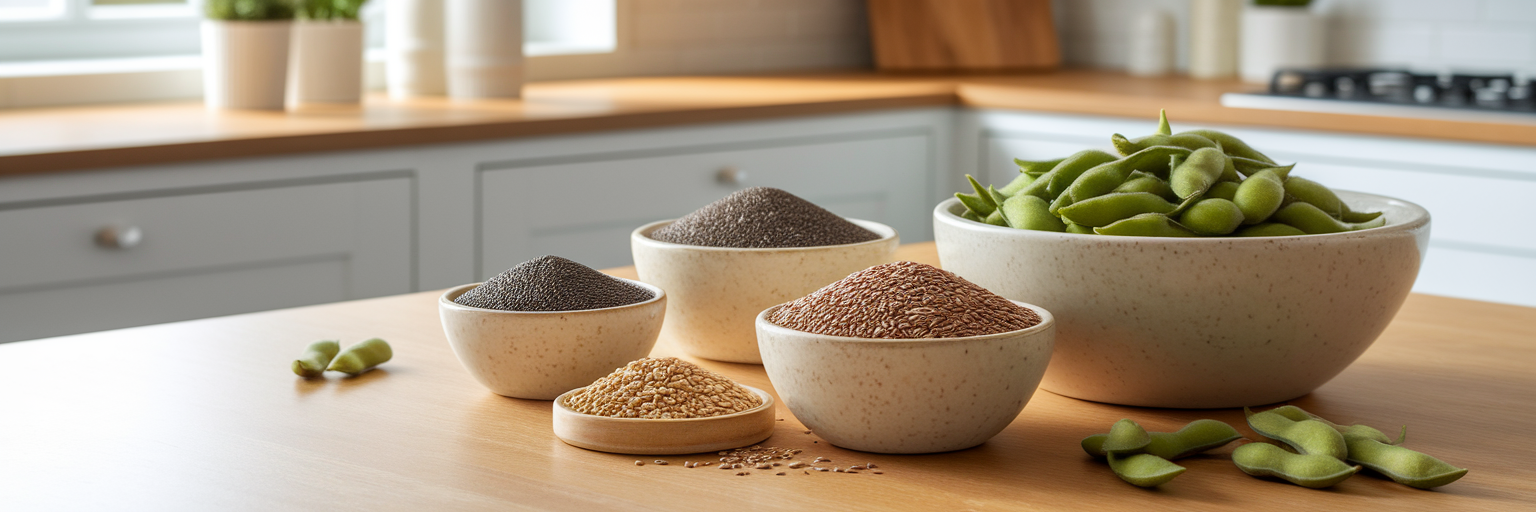You track your workouts, prioritize sleep, and eat well, but something still feels a little off. Maybe it’s persistent fatigue, unpredictable moods, or just a general sense that your body isn’t quite in sync. If this sounds familiar, the answer might not be in training harder, but in looking closer at your body’s internal communication system: your hormones.
The Vital Link Between Protein and Your Hormones
Think of your hormones as the body’s chemical messengers, delivering instructions that control everything from your energy levels to your mood. To create these messages, your body needs specific building blocks called amino acids, which come directly from the protein you eat. You can imagine amino acids as the letters of an alphabet. Without enough letters, your body can’t spell out crucial hormonal “words” like insulin or growth hormone.
When protein intake is inconsistent, the body is starved of these essential materials. This can lead to common symptoms of hormonal imbalance, like that nagging fatigue or those frustrating mood swings. It’s one of the most effective natural ways to balance hormones because you are giving your body the raw materials it needs to regulate itself.
Beyond building hormones, protein plays a critical role in stabilizing blood sugar. We’ve all felt that afternoon slump after a carb-heavy lunch. When you pair protein with carbohydrates, it slows down the absorption of sugar into your bloodstream. This prevents the sharp insulin spikes that can trigger your body to release cortisol, the stress hormone. Consistent cortisol spikes can disrupt your entire hormonal system. By keeping your blood sugar steady with adequate protein, you create a foundation for hormonal stability. As a report from the Harvard T.H. Chan School of Public Health highlights, well-planned plant-based diets can provide all the protein needed to support these vital functions.
Top Plant-Based Proteins for Women's Health

Now that we understand why protein is so important, let's explore some of the best hormone balancing foods for women. Adding these delicious and versatile options to your meals is a simple way to support your body from the inside out.
Soy Foods and Phytoestrogens
Whole soy foods like edamame, tofu, and tempeh often get a bad rap, but they are fantastic for women’s health. They contain compounds called isoflavones, which are a type of phytoestrogen or plant estrogen. These compounds can gently interact with your body’s estrogen receptors, helping to buffer hormonal fluctuations that occur during your monthly cycle or perimenopause. The key is to focus on whole or minimally processed soy foods, not highly processed isolates.
The Power of Flax and Hemp Seeds
Don’t underestimate these tiny seeds. Flaxseeds are a rich source of lignans, which support healthy estrogen metabolism in the gut. This helps your body efficiently process and eliminate excess hormones. Hemp seeds, on the other hand, are a great source of gamma-linolenic acid (GLA), an omega-6 fatty acid that helps the body produce anti-inflammatory compounds called prostaglandins. This can be particularly helpful for easing PMS symptoms.
Versatile Legumes and Grains
Legumes and grains are staples in a plant-based diet for women's health for good reason. Pea protein has become incredibly popular because it’s easily digestible and rich in essential amino acids. Lentils and chickpeas are packed with fiber, which is crucial for gut health. A healthy gut is essential for hormone detoxification, as it helps remove spent hormones from the body. Quinoa stands out as a complete protein, meaning it contains all nine essential amino acids. These ingredients are incredibly versatile, and for those looking for new ways to use them, we've shared 3 easy vegan protein recipes you'll actually crave on our blog.
The Benefits of Chia Seeds
Chia seeds are a true nutritional powerhouse. They offer a unique combination of protein, high fiber content for digestive regularity, and anti-inflammatory omega-3 fatty acids. This powerful trio works together to support stable energy, a healthy gut, and reduced inflammation, all of which contribute to better hormonal harmony.
Essential Micronutrients in Plants for Hormone Regulation
While protein provides the building blocks, certain micronutrients found in plant-based foods act as the managers, directing hormonal processes. Think of them as the support crew that ensures everything runs smoothly.
Magnesium for Stress and Sleep
Often called the "calming mineral," magnesium is a hero for hormonal health. It helps regulate the nervous system and manage the body's production of cortisol. As health experts at the Mayo Clinic note, magnesium is involved in hundreds of bodily functions, including those that control stress and insulin sensitivity. Getting enough can lead to better sleep and a more resilient response to stress.
Zinc for Reproductive Health
Zinc is directly involved in the production and regulation of key reproductive hormones like estrogen and progesterone. It plays a vital role in supporting healthy ovulation and the overall menstrual cycle. A deficiency in zinc can contribute to irregularities, making it a critical nutrient for women.
B Vitamins for Energy and Mood
The B-vitamin family, especially B6, is essential for both energy and mood. Vitamin B6 helps your body produce neurotransmitters like serotonin and dopamine, which influence how you feel. It also supports the liver in its job of clearing out excess hormones, preventing them from recirculating and causing imbalances.
Iron for Active Women
Active women, particularly those who menstruate, have higher iron needs. Low iron levels can lead to fatigue, brain fog, and poor workout performance. Plant-based iron, found in foods like lentils and spinach, is best absorbed when paired with a source of Vitamin C, like bell peppers or citrus fruits. Many high-quality plant-based supplements for energy are also fortified with iron to help fill any nutritional gaps.
| Micronutrient | Hormonal Role | Top Plant-Based Sources |
|---|---|---|
| Magnesium | Regulates cortisol (stress hormone) and supports sleep | Hemp seeds, tofu, black beans, spinach |
| Zinc | Essential for ovulation and production of sex hormones | Lentils, chickpeas, tofu, pumpkin seeds |
| Vitamin B6 | Aids in producing mood-regulating neurotransmitters | Chickpeas, nutritional yeast, potatoes, bananas |
| Iron | Supports energy levels and prevents fatigue | Lentils, spinach, tofu, fortified cereals |
Note: This table highlights key nutrients and their common plant-based sources. Nutrient content can vary based on preparation and serving size.
Simple Ways to Weave Vegan Protein into Your Routine

Making vegan protein for hormonal balance a part of your daily life doesn't have to be complicated. It’s all about making small, consistent additions that add up over time. Here are a few simple strategies you can start using today:
- Start with a Power Smoothie. A morning smoothie is a five-minute solution for front-loading your day with nutrients. Blend a scoop of protein powder with your favorite plant milk, a handful of spinach, a tablespoon of seeds, and some fruit. Using a delicious base like our chocolate vegan protein makes it feel like a treat.
- Upgrade Your Salads and Bowls. Turn a light lunch into a satisfying, hormone-supportive meal by adding a generous scoop of chickpeas, lentils, or baked tofu. This simple addition boosts the protein and fiber content, keeping you full and energized all afternoon.
- Rethink Your Snacks. Instead of reaching for sugary snacks that lead to an energy crash, choose protein-rich options. A handful of edamame, an apple with a spoonful of almond butter, or a small bowl of Greek-style coconut yogurt can curb cravings and keep your blood sugar stable.
- Incorporate Protein into Dinner Effortlessly. You don’t need to learn complex new recipes. Make simple swaps like using lentils instead of ground meat for a bolognese sauce, or try making black bean burgers for your next barbecue. These mindful additions make a big difference without requiring a lot of extra effort.
Choosing a High-Quality Vegan Protein Supplement
While a whole-foods diet is the foundation, a high-quality protein supplement can be an incredibly convenient tool for active women. But not all powders are created equal. Here’s what to look for to find the best vegan protein for active women:
- Complete Amino Acid Profile: Look for a blend of protein sources, such as pea and rice protein. Combining different plants ensures you get all the essential amino acids your body needs to build hormones and repair muscle.
- Third-Party Testing and Clean Ingredients: Choose brands that are transparent about their sourcing and use third-party testing to verify purity and potency. Avoid products with a long list of artificial sweeteners, gums, and fillers, which can sometimes cause digestive upset.
- Consider Fortified Options: Some protein powders are fortified with key micronutrients like iron or B vitamins. This can be a convenient way to fill common nutritional gaps and get more value from your supplement.
- Acknowledge Bioavailability: It's true that some plant nutrients can be slightly harder for the body to absorb. However, this is easily managed by eating a diverse diet and choosing a high-quality, easily digestible protein powder. Transparency about this from a brand is a good sign of trustworthiness. For a deeper look, you can explore our guide on the best protein powders.
A Holistic Approach to Hormonal Wellness
Ultimately, supporting your hormones is about creating a balanced lifestyle. Consistent, high-quality plant protein provides the essential amino acids, micronutrients, and blood sugar stability that form the bedrock of hormonal health. But remember, nutrition is just one piece of the puzzle.
True wellness comes from a holistic approach that also includes managing stress, getting quality sleep, and moving your body in a way that feels good to you. These pillars work together to create a resilient system that can adapt and thrive.
You can start small. Try adding a tablespoon of flaxseeds to your oatmeal tomorrow morning. What's your favorite way to enjoy plant-based protein? For more tips and inspiration, feel free to explore more resources on our blog.



